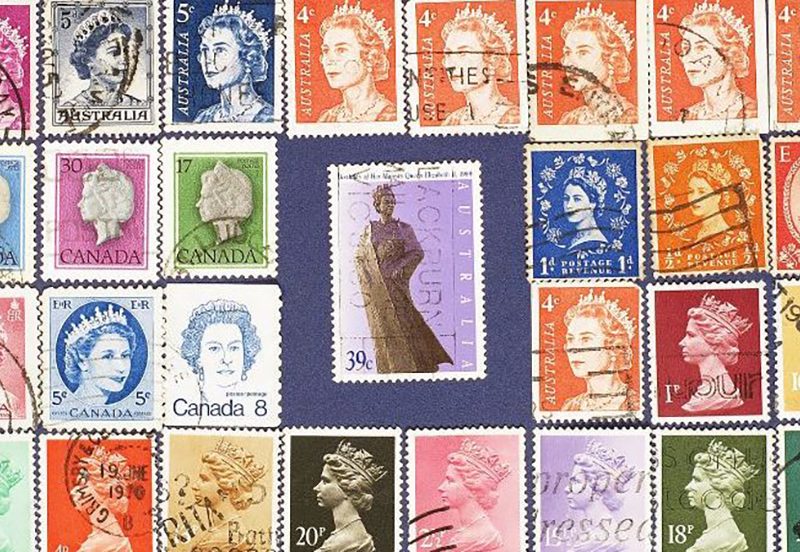Postmen and women across the UK will be kept busy this Valentine’s Day – as an estimated 25 million cards will be winging their way to loved ones on 14th February!
Despite the increase in online dating – with a survey in 2018 revealing 50% of single British people had never asked a person out face-to-face – the practice of sending physical Valentine’s cards is still alive and well.
Although 46% of respondents say they met their current partner online, digital dating can never replace the thrill of receiving a beautiful card with a romantic message, flowers, chocolates, or some other gift.

© allenkayaa / Adobe Stock
In fact, statisticians in the UK estimate that on 14th February 2019, spending will break the £1 billion mark. The age of romance certainly isn’t dead, with around £262 million spent on flowers alone.
The average British man spends £40 on his loved one and, in the run-up to Valentine’s Day, lingerie sales double and jewellery sales peak on 8th February, as consumers prepare their Valentine’s surprise.
The tradition of sending Valentine’s cards has grown consistently – according to surveys, the UK market today is worth around £50 million. It has grown by around £1 million, year on year, in the 21st century and remains a booming industry.
History of Valentine’s cards
The tradition of celebrating Valentine’s Day and sending a romantic card dates from the third century AD, when the Roman emperor, Claudius II, had banned marriage among his troops, as he felt having loved ones at home made them weaker in battle.
A young Christian priest, Valentine, performed wedding ceremonies in secret, but when Claudius found out, he had him imprisoned and sentenced to death. Valentine befriended his jailer, Asterius, whose daughter was blind.
In a miraculous act of healing, Valentine restored her sight – and some versions of the story say he fell in love with her and that she continued to visit him in jail.
However, nothing could save him from public execution on 14th February 270 AD. Before the fateful day arrived, he wrote an affectionate note to Asterius and his daughter, signing it, “From your Valentine,” thus inspiring the tradition of sending Valentine’s greetings cards.
First Valentine’s card
The first recognised Valentine’s card was sent in the 15th century. Ironically, considering the tradition was rooted in jail, it was sent by the French Duke of Orléans, Charles I, from the Tower of London – where he was imprisoned in 1415, following the Battle of Agincourt.
The duke, who was only 21 at the time, had assumed the role at the tender age of 13, after the murder of his father, Louis I. Although Charles was in the military and fought at the Battle of Agincourt, he’s best remembered as a poet.
After being captured after the battle, he was imprisoned by the English and spent almost 25 years incarcerated in various jails. During his time there, he wrote around 500 poems, in French and English.
In 1415, he sent a hand-written card to his 16-year-old wife, Bonne of Armagnac, the eldest daughter of Bernard VII, Count of Armagnac. Charles wrote to his young bride, “Je suis desja d’amour tanné, ma tres doulce Valentinée.”
This roughly translated as, “I am already sick with love, my very gentle Valentine.”
The romantic and ultimately tragic Valentine’s greeting is part of the British Library’s manuscript collection.
Love letter
The British Library also has the first documented Valentine’s letter, dating from 1477. It was sent to English gentleman John Paston by his fiancée, Margery Brews. She wrote a romantic message, calling John her “right well-beloved Valentine”. She told him, “My heart me bids evermore to love you truly over all earthly things.”
In February 2011, the ancestors of the 15th century lovers were traced – thanks to modern technology – in time for Valentine’s Day, when the ending to the story was unearthed.
The romance could easily have ended in heartbreak, as it appeared both sets of parents were against the marriage. In those days, it was tradition for the bride’s family to provide a financial dowry to the groom’s family. It appeared the groom’s parents wanted more money, but the bride’s parents weren’t prepared to increase their offer.
The letter from Margery begged John not to give up on her, even though the wedding negotiations had reached stalemate, because she loved him more than anything and wished to become his wife.
Historians say the couple finally had their fairytale ending, despite Margery’s father digging in his heels over the amount of her dowry. Margery married her knight and they lived happily ever after. They had a son, William, in 1479.
The Valentine’s letter, and others written by the Paston family, of Norfolk, are the oldest private correspondence surviving in Britain today and shed a unique light on life for a Medieval family.
Margery and John’s descendants were traced through the family history website, My Heritage. Sir Charles Buckworth-Herne-Soame and his wife, Lady Eileen, had been unaware of their link to the historic Valentine’s letter, until they were traced in 2011.
Romantic verses
Romantic poems and sayings are found within the Valentine’s cards. The most familiar Valentine’s poem is, “Roses are red, violets are blue, sugar is sweet and so are you.”
This verse first appeared in 1784, when it was published in a collection of nursery rhymes. However, the early version said, “The honey is sweet,” rather than “sugar”.
While this was the first appearance of the verse in the form that we know today, it was probably based on a poem called The Faerie Queene, written in the 1590s by Sir Edmund Spenser. His verse contained the lines, “She bathed with roses red, and violets blue, and all the sweetest flowers that in the forest grew.”
The trend for sending Valentine’s cards grew during the 18th century. The earliest were hand-made, as pre-printed ones weren’t yet available. People would draw symbols, such as flowers and love-knots, on paper and would write a romantic poem to send to a loved one.
Many of the cards were sent anonymously (as they are today) and would be slipped secretly under the recipient’s door, or tied to their door knocker.
Pre-printed cards
The first pre-printed cards first began to appear in the late 18th century. The oldest surviving card dates from 1797. Currently at York Castle Museum, it was sent to a Mr Brown of Dover Place, Kent Road, London, by Catherine Mossday.
The card was published by John Fairburn of 146 Minories, London. It is decorated with images of Cupid, doves and flowers. The verse reads, “Since on this ever happy day, all nature’s full of love and play, yet harmless still if my design ’tis but to be your Valentine.”
At the end of the verse, Miss Mossday wrote a personal message to Mr Brown, inviting him to visit her the following Sunday. Sadly, there’s no record of whether he visited, or whether their romance blossomed.
Worst Valentine’s card
Historians have unearthed what they claim is possibly the worst Valentine’s card ever! As part of the Valentine’s collection at York Castle Museum, its exact date is unknown, although it is believed to be from Victorian times.
It was printed by Angus Thomas, of London. It had a moustache on the front, made of real human hair and glued on to the card! It was sent to a woman and the verse read, “With St Valentine’s heartiest greetings and best hopes that you will receive another moustache – with a man attached.”
Despite the Victorians’ reputation as being prim and proper, they loved curios, but historians say that even by those standards, this card was bizarre! It seems astounding that someone would send a card with a real moustache glued on the front!
Commercialised era
In 1913, the card manufacturer, Hallmark Cards, produced its first Valentine’s card. This was a key moment in the commercialisation of Valentine’s Day.
The first Valentine’s card to be posted abroad from the UK – across the Atlantic Ocean to the United States – was sent in the mid-19th century. The tradition had spread to America from the UK and was advertised as a “British fashion”.
Advanced printing technologies were being used in the US at the time and more elaborate cards were mass produced. This led to even greater popularity.
In the 21st century, Valentine’s Day has become more commercial and is a multi-million pound industry, although for the individuals participating, it’s still filled with the spirit of romance and true love.
When it comes to posting important items, Selectabase’s specialist mailing services, including Create and Post, take the hassle out of direct mailing.
We will print, stamp and post your promotional materials with our complete mailing house solution. Please contact us for further information.





